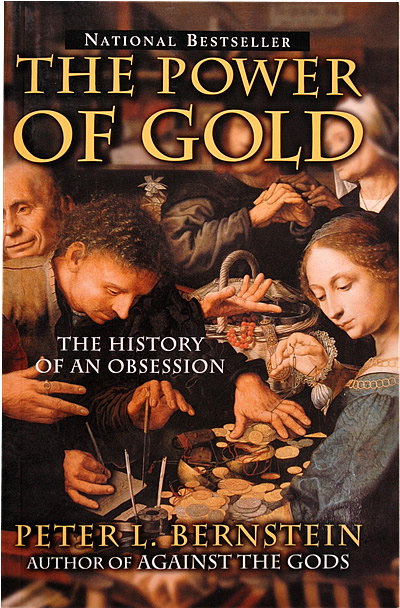Peter Bernstein was a brilliant and creative money manager, research analyst and financial commentator.
As a historian and author, his writings are original, incisive and provocative. In his prior book, Against the Gods: The Remarkable Story of Risk, he concludes: “Conservative institutional investors tend to use broad diversification to justify higher exposure to risk in untested areas – but diversification is not a guarantee against loss, only against losing everything at once.”
Was he anticipating the rationale used by the rating agencies in the run-up to the 2008 crisis in mortgage finance securitization? Does this speak to current fascinations with “alternative” investment vehicles?
The Power of Gold chronicles the long trajectory of gold from the supreme symbol of wealth and power, through its use as a store of value and medium of exchange, through the “Gold Standard” period that whimpered to a close in 1971, to its termination in financial disrepute.
When Bernstein sent his book to the printers in 1999, the price of gold had fallen to $300 per ounce from its exuberant peak of $850 in 1980.
He was in auspicious company in believing that basing the global financial system on the “barbarous relic” would be a disastrous mistake. With few exceptions, economists were united in this view, and virtually every central bank was disgorging their gold holdings.
Even former U.S. Federal Reserve chairman Alan Greenspan had capitulated, despite having previously extolled the virtue of gold writing, in 1966: “This is the shabby secret of the welfare statists’ tirades against gold. Deficit spending is simply a scheme for the confiscation of wealth. Gold stands in the way of this insidious process. It stands as a protector of property rights.” (Objectivist,1966).
In May 1999, the U.K. Treasury announced its plan to reduce holdings by half in the coming months.
Optimism for the human condition was rampant in those years. The Communist empire had disintegrated in 1991, Francis Fukuyama’s The End of History was a best seller: “What we may be witnessing is not just the end of the Cold War, or the passing of a particular period of post-war history, but the end of history as such: that is, the end point of mankind’s ideological evolution and the universalization of Western liberal democracy as the final form of human government.”
Democratic free market capitalism would lead the world into prosperity for all. Getting rid of gold was simply part of eliminating the historical baggage.
Peter Bernstein did not achieve his status as investment statesman by dogmatically adhering to one thesis – no matter how logical and well supported – especially with such a grand consensus.
Instead, he asks: “Has the glorious history of gold come to an end?”
“No overwhelming force has come along to test the true skills of the central banks or to rock the dollar from its perch at the zenith.”
Was the crisis of 2008 such a test? Is quantitative easing worthy of a passing grade? Superlative marks? Or abject failure?
Only time will tell.
Bernstein’s conclusion: Gold’s “return to its traditional role as universal money is unlikely, however, unless the time should come when the dollar, the euro, and the yen have all failed to function as acceptable means of payment across international borders.”
In the 11 years following publication, gold soared from $300 per ounce to $1950.


